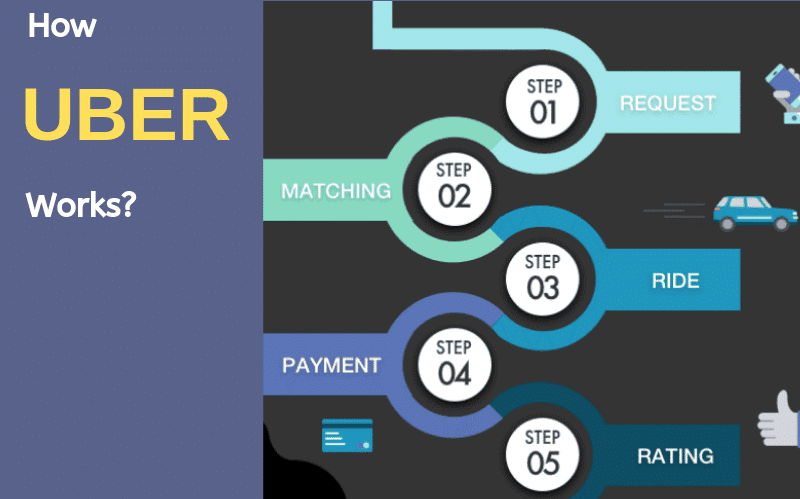To make an app like Uber, you will need to include the following key features and tech components:
1. User Authentication:
This feature allows users to create an account and log in to the app, and also includes options for social media login and password recovery.
2. Ridesharing:
The core feature of the app, allows users to request a ride, view nearby drivers, and track the progress of their ride.
3. GPS and Maps:
This feature uses the device’s GPS and maps to determine the user’s location and show nearby drivers and vehicles.
4. Payment Integration:
This feature allows users to pay for their rides using various payment methods, such as credit card, debit cards, or digital wallets.
5. Push Notifications:
This feature sends notifications to users regarding ride status updates, driver’s arrival, and other important information.
6. Driver Management:
This feature allows drivers to manage their rides, accept or decline ride requests, and track their earnings.
7. Rating and Feedback:
This feature allows users to rate their drivers and provide feedback, which can be used to improve the quality of service.
8. Admin Panel:
This feature allows administrators to manage the app, monitor and track usage, and make necessary adjustments.

Building an app like Uber requires some specific tech components, such as:
- A web-based admin panel for managing the app and monitoring usage.
- A server-side API for handling requests, such as ride requests, driver updates, and payment processing.
- A mobile app for riders, which is typically built using a framework such as React Native.
- A mobile app for drivers, which is typically built using a framework such as React Native.
- A mapping and routing service, such as Google Maps or OpenStreetMap, determines the best route for drivers and displays it to the users.
- A real-time communication service, such as Firebase, facilitates communication between drivers and riders.
Don’t forget about the important requirements for your app. It’s essential to stay on top of legal and regulatory protocols, as well as scalability, security, and reliability. With this in mind, you’ll be good to go!

